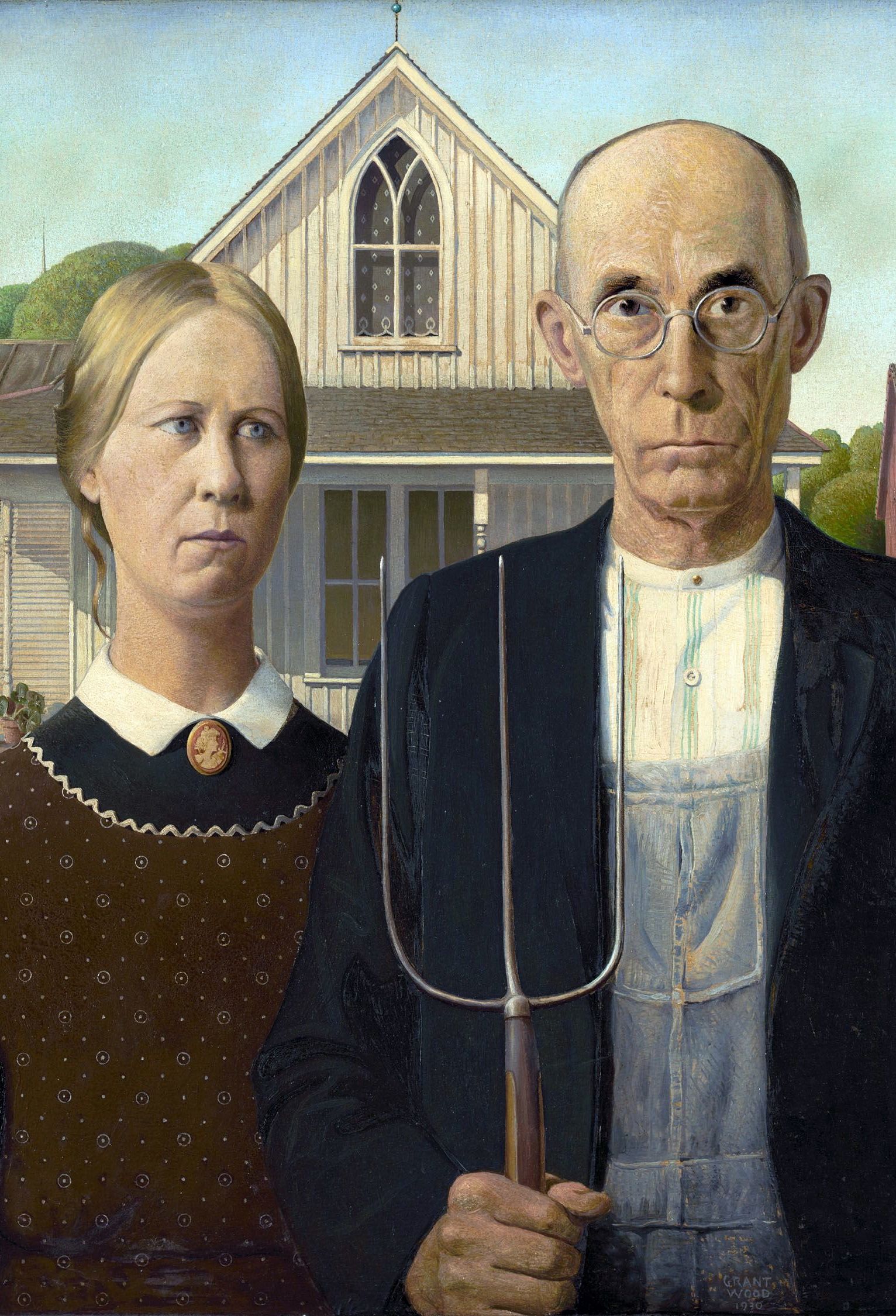- Vol. 03
- Chapter 04

History of art
“What’s this?” you ask.
I take the sheet, two black and white photos, very cheaply printed. Are kids these days not entitled to a bit of colour?
“Oh, that’s American Gothic. And the other one looks like it’s by the same guy.”
“Gothic, like the ones in town?”
I smile. “No, not like them.”
I hope you won’t ask me to explain it properly. Once upon a time I would have been able to, would have been totally clued up. But that time has gone.
You don’t ask. You just give the paper a last scrutinise, brown wrinkled. Then you abandon it and run off. It falls to the floor like a feather.
I sit, overcome with a sudden heavy feeling, a kind of exhaustion but not a throw-your-hands-in-the-air one. A quiet one. My eyes slump shut, the paper blurring white and then disappearing into blackness.
Pictures jog across my vision. A Renoir-esque scene featuring a bunch of happy young things in a boat, the river green and the sky cloudless. A Mona Lisa, smiling but with that sideways, distant look, holding a scroll. Van Gogh fields with a swirly sky and a young woman wandering, attracted by the storm, by such blinding, flickering blue. Dali dream sequences, faces distorted, the world all the wrong colours and shapes and reality becoming further and further away and then – Guernica. The town bombed. Children screaming.
History of art
But no, they aren’t children. It’s not a war. It’s just a stupid young woman who did everything wrong. I open my eyes, feeling sick and dizzy. I sigh and it feels like the life has all gone out of me, if there was any left.
I look at the fridge, peppered with magnets from all over the world – what are their stories? I don’t even remember buying them. There are your drawings, your dear horses and cats and mice. I want to focus on them but my eyes slip, treacherous, to the paper on the floor, to the woman who couldn’t find a man and was stuck working with her father on the farm forever. Her blue eyes look at me accusingly. They are black really, of course, but I have seen this painting enough times. I see it everywhere.
I know what she wants to tell me, about chances and privilege and throwing what you are given back in the universe’s face. I’m sorry. I’m so sorry.
I try to think of a painting strong enough to replace all of those. One full of peace and love and light and colour. Kandinsky’s circles spin at me. Monet’s lilies float just out of reach. Miró’s squiggles, once so inviting, are now a code I can’t crack.
You appear around the door, face framed in ash-blond locks like one of Velásquez's princesses. My one piece of art. I couldn’t put you in an exhibition. You’re too good to share. I wouldn’t change you for anything, you know. Please know.
